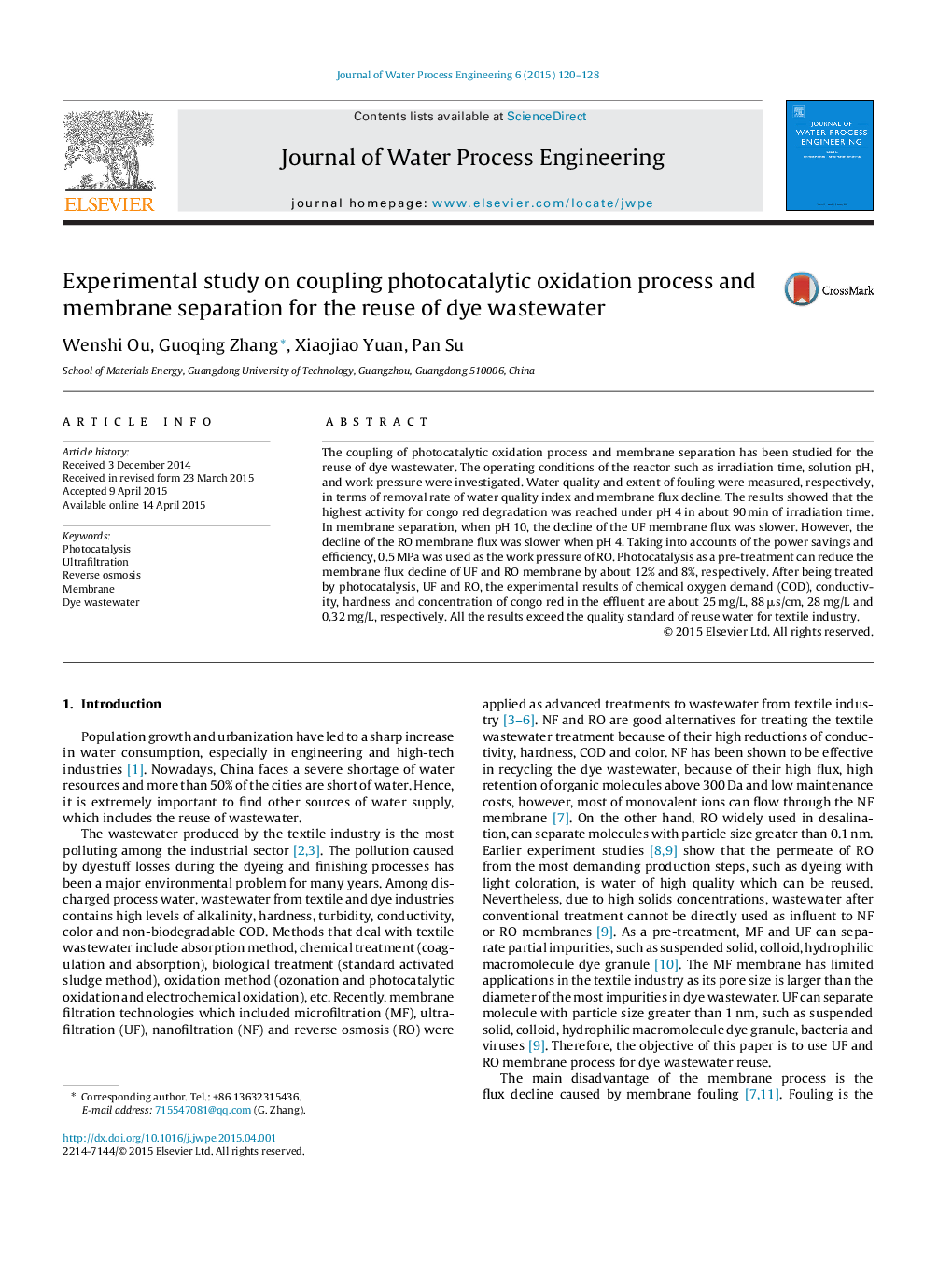| کد مقاله | کد نشریه | سال انتشار | مقاله انگلیسی | نسخه تمام متن |
|---|---|---|---|---|
| 232660 | 465296 | 2015 | 9 صفحه PDF | دانلود رایگان |
The coupling of photocatalytic oxidation process and membrane separation has been studied for the reuse of dye wastewater. The operating conditions of the reactor such as irradiation time, solution pH, and work pressure were investigated. Water quality and extent of fouling were measured, respectively, in terms of removal rate of water quality index and membrane flux decline. The results showed that the highest activity for congo red degradation was reached under pH 4 in about 90 min of irradiation time. In membrane separation, when pH 10, the decline of the UF membrane flux was slower. However, the decline of the RO membrane flux was slower when pH 4. Taking into accounts of the power savings and efficiency, 0.5 MPa was used as the work pressure of RO. Photocatalysis as a pre-treatment can reduce the membrane flux decline of UF and RO membrane by about 12% and 8%, respectively. After being treated by photocatalysis, UF and RO, the experimental results of chemical oxygen demand (COD), conductivity, hardness and concentration of congo red in the effluent are about 25 mg/L, 88 μs/cm, 28 mg/L and 0.32 mg/L, respectively. All the results exceed the quality standard of reuse water for textile industry.
Journal: Journal of Water Process Engineering - Volume 6, June 2015, Pages 120–128
